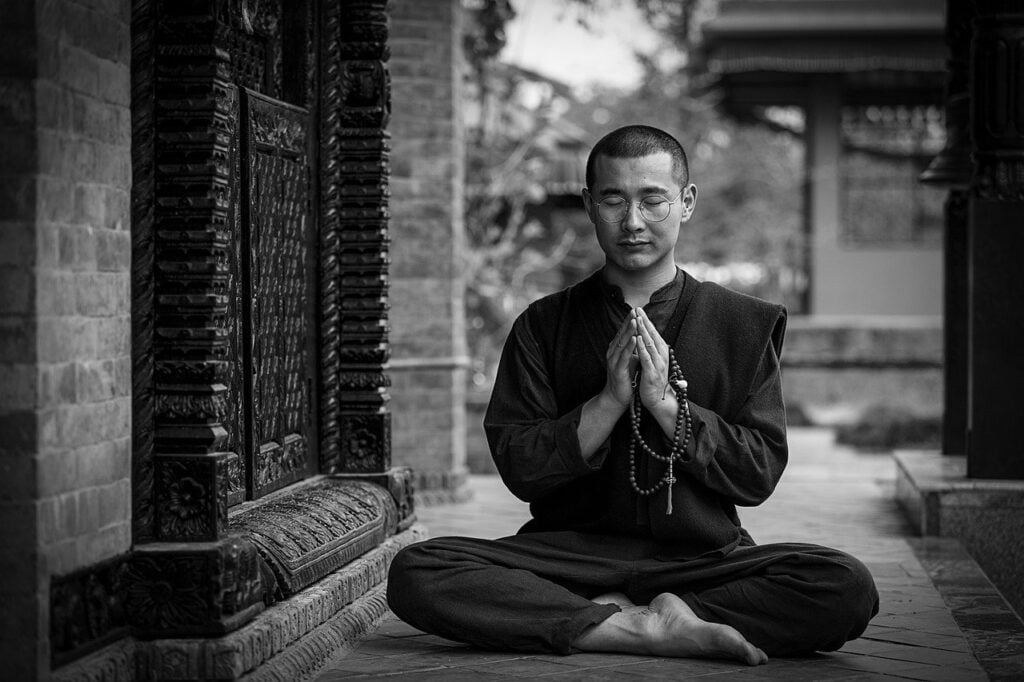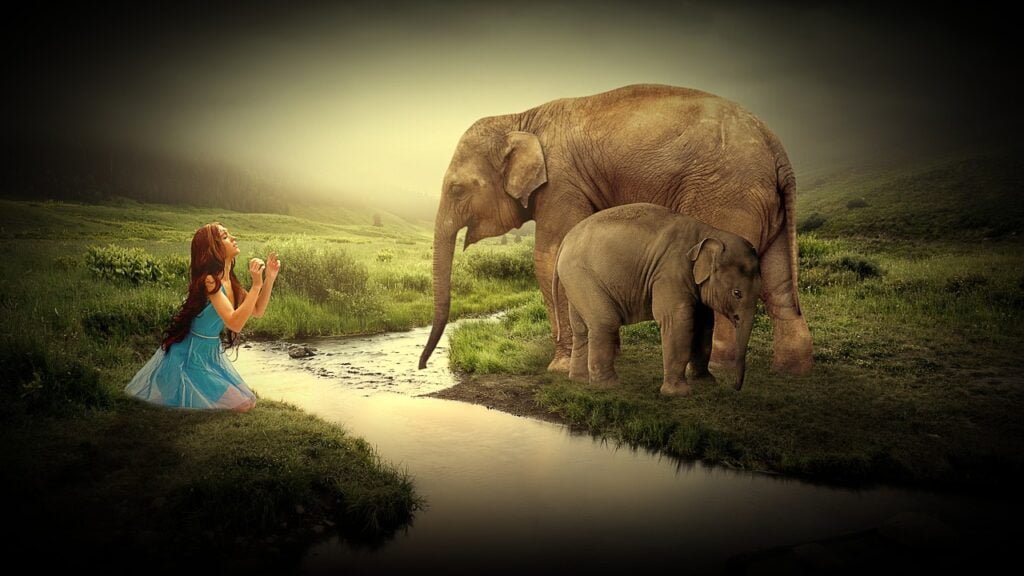Most people have created confusion between the elements of yoga and the limbs of Yoga. There has to be no confusion between these two. Common people think Patanjali and 8 Limbs of Yoga are the real elements of Yoga. However, it is to be noted that before the system of Patanjali, there existed another way of looking at the Yogic Principles.
You can read the following article to know. Click here to read the article on Hiranyagarbha Yoga Darshana, a Yoga before Patanjali.
Last Updated on
Elements of Yoga are categorical rather than having certain numbers. A Yoga practitioner focused only on physical exercises cannot explain the reality of Yoga. Most Yoga Teachers miss it because of the negative inferences. They say, Yoga is done for physical and mental fitness only, but that’s not the whole truth.
Yoga is to understand ‘supreme- self’ rather than connecting with our body through various poses.
The elements of yoga are categorized into various divisions, however here are the three categories based on inferences from books like Bhagawat Gita, Patanjali Yoga Sutras, Upanishads, Yoga related books like Hatha Yoga Pradipaka and Yoga Vashista, and many more. These are the techniques of the Yogis from the Himalayas and other parts of India.
The category of elements of yoga is as follows.
- Elements of Yoga based on psychological temperament.
- Elements of Yoga based on Dharana or contemplation.
- Limbs of Yoga based on Patanjali Yoga Sutras, Upanishads, and various other yoga-related texts.
Table of Contents
Overview.
The literal meaning of Yoga is the union of your supreme self and you. For people having developed minds and brains, the supreme self is within ourselves. The statement is supported by the Mahavakya or the supreme statement ‘Aham Brahmasmi’, which means I am the Brahman or God. This Brahman is not the caste but the supreme reality consisting of everything from the past to the future. You can read the article on Brahman from here. This statement can only be said by accomplished Yogis.
Although, for an underdeveloped mind and brain there will always be the presence of another ‘God’. The elements of Yoga or the elements of the union of self and supreme self varies for people. In the real Indian system, there are always alternates for the Union. These are the variable elements of Yoga based on temperaments.
Assume that your friend always failed in mathematics examinations but topped in social activities. He loves his family and society. Now, you two will certainly have a varied temperaments. So, as a mathematician, you would believe in logic and as a social guy, your friend would believe in faith and love. Yogically, elements of Yoga will vary for you two. For a guy with logic, the element will be ‘Jnana (knowledge), for a guy having love and faith, Bhakti (devotion) is an element.
Similarly, for a person having a commitment to duty, your element of yoga would be ‘Karma’ or your duty. And, for a person having an interest in learning, the element would be ‘Jnana’ or Knowledge itself. These elements of Yoga when simplified through temperaments are as follows.
Elements of Yoga based on Temperament.
- Karma, is the duties assigned to you by nature to fulfill the ecological/social, etc. niche called Dharma based on an eternal principle called Rta.
- Bhakti, or selfless devotion.
- Jnana, or the continuous flow of knowledge within ourselves.
In Karma Yoga, you consider all of your duties to be a gift of God rather than your own doing. Also, you keep on working without any expectation thinking it’s all done by God. In Bhakti Yoga, you give devotion to a chosen ‘deity’. Your utmost and sincere devotion will connect with that ‘supreme self’ that you have chosen. A commonly chosen God for devotion is Lord Krishna. There are examples of various accomplished Bhakti Yogis in India. One is Chaitanya Mahaprabhu, a great Yogi of the 15th Century.
In Jnana Yoga, you read every scripture/book that makes you understand the unity in nature. You can read books intended to give knowledge rather than enjoyment. Adi Sankaracharya was one of the greatest Jnana Yogi of all time. He is the founder of the modern system of Yoga and meditation in India.
The difference between elements of Yoga and limbs of Yoga?
The limbs of yoga vary with different scriptures. The Patanjali Yoga sutras have 8 limbs, although as per the Maitrayaniya Upanishad or Maitrayani Upanishad, there are 6 limbs. The Upanishads were being imparted to separate people during different times based on Guru-Sishya tradition. In this tradition, the knowledge was passed only to deserving students. So, these limbs differed from person-person.

The common thing that holds these limbs together is ‘Dharana’ or contemplation. This limb is common in almost all the books related to Yoga.
The elements of Yoga for contemplation.
Following is the list of elements of Yoga based on contemplation or ‘Dharana’.
- Prithivi or Earth is the first basic element that acts as a base or ‘Pad’. It gives support to a person physically.
- Jal or Water is the second basic element that represents flow in a being, Taoism explains it in great detail. This flow is all your desires which flow to unite with your higher desire of being united with the supreme. Just like the river uniting with the Sea.
- Agni or Fire is the element of yoga representing your Karma and consciousness. Agni always moves up so as the perfect soul. It is a metaphor for the perfect soul.
- Vayu or Air is the essence of life, it is about your breath. You can click here to read about Prana from Scientific Monk.
- Akash or Ether is the space and time itself, it is the complete you, however, control over this element is required in order to understand/absorb in supreme self itself.

The limbs of Yoga.
Now coming to the third categorical element of Yoga. These elements are called ‘Anga’ or in-separable parts. However, it is to be noted that philosophically these are minor elements. Let’s have a look at the list of limbs used by Patanjali.
The list of Patanjali is as follows.
- Yama, commonly the rules of life. Whatever rules you have set in life, you can follow them. These should be your priorities on how you deal with society, your family, animals, etc.
- Niyamas, or the rules regarding your spiritual conduct. How you are tackling with good and bad of your life. The worship of gods or devotion all should be followed based on your commitments and the goal.
- Asana, or the correct posture of the body. The perfection of Asana is required in order to stick to one particular place or time. You cannot do perfect meditation without sticking to one particular place.
- Pranayama is the rule of your breath. There are only two rules of your breath one is Rechaka and the other is Puraka. The former is exhalation and later on is inhalation. However, the practice of holding Rechaka or Puraka is considered to be Kumbhaka or the best and easiest way of Pranayama.
- Pratyahara is controlling the food for the senses. The enjoyments of the senses are nothing but the food of your senses. They need to be controlled in order to understand their nature. This is the compulsion before contemplation.
- Dharana is the contemplation. You need to contemplate the elements of yoga as specified above in the list to get a continuous flow of concentration which is the next stage.
- Dhyana is the continuous flow of concentration. People often confuse themselves considering dhyana to be just concentration. However, the flow of concentration to your elements of yoga is called Dhyana.
- Samadhi is the union or the final destination of Yoga. When you practice continuous Dhyana, you get Sama (united) + Dhi (intellect). It is where your mind gets united with objects of contemplation. If you have chosen Bhakti, you become one with the Deity. If you have chosen fire, you get united with your Karma and Consciousness. Let’s see how this works.
Samyama for Superpower, the perfect accomplishment in Yoga.
The Dharana, Dhyana, and Samadhi combined are called Samyama in the Patanjali Yoga Sutras. It is mentioned that the continuous practice of Samyama gives superpowers to the practitioner. If someone does Dharana on an elephant, and practices Dhyana further get Samadhi in it. This person gets a power elephant. Here the elephant is among the elements of yoga.
Similarly, if you do Dharana on the Karma with a steady flow of Dhyana to get Samadhi, you can know your past, present, and future. You can click here to read about Samyama and Siddhis from Scientific Monk.

Tarka Element of Jnana Yoga.
There is a requirement for a component of ‘Tarka’(Logic) also. The Maitrayaniya Upanishad or Maitrayani Upanishad considers this in the list of limbs rather than the elements of Yoga.
The limbs of Yoga in the Maitrayaniya Upanishad are as follows,
- Pranayama
- Pratyahara
- Dhyana
- Dharana
- Tarka
- Samadhi
The sequence is different where the Dhyana is before the Dharana. The Yamas, Niyama, and Asana are not compulsions like Patanjali Yoga Sutras. As specified earlier, the list of limbs varies with the temperament of an individual. This technique is best suited for people having developed minds.
If the mind is strongly developed just like the topper of mathematics, he/she can do dhyana easily. However, dhyana is developed for non-elements here rather than elements of yoga. The toppers probably can solve the complex problems of calculus through Dhyana but cannot do Dharana on any elements of Yoga. If they do Dhyana on the elements of Yoga then this itself will be the Dharana, so the sequence in the list varies for people with such temperaments.
Tarka or logic becomes very much necessary for them to get their mind on track. During ancient times even atheists used to get enlightenment because it was not a mystical thing. However, due to misunderstandings, it became more mystical rather than philosophical. The logic was thought to be in the list of Limbs of Yoga only. In modern times, however, this component is being overlooked.
Stay updated with Scientific Monk to know more about the vastness of Indian Philosophy, Vedanta, Spirituality, and other different interesting spirituality-related stuff.





Leave a Reply